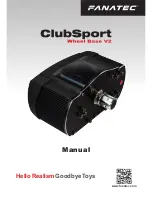
50
Commissioning
16 4 Fault-free operation
Requirements
Electrically sound connections within the entire system
Electrically sound ground and 0 V connections (frequent
fault sources are corroded contacts or inadequate ground
connections.)
The ground connection must be on a line that is separated
from other users (protect ground connections to appropria-
te bodywork points from corrosion with protective lacquer).
Contact points may not be dirty, oxidized, or even rusty.
Cable, terminal, or plug connections may not be loose.
Fuse holders may not have any loose contacts.
Switches on the machine must not have any loose contacts.
Solenoid valves or the motor for gas adjustment must be
equipped with a diode protection circuit (flyback diode).
Check whether the diagnostics LED on the receiver
begins to flicker or goes off in an operating state. In this
instance there is a poor contact in the supply voltage of
the receiver.
In this case, have the cabling checked by a specialist
workshop.
16 4 1 Commissioning check list
Table: Commissioning check list
No
Activity
Carried out
1
Cabling between receiver and winch has
been properly installed by a specialist
workshop
2
Receiver is inserted into the correct
socket(s)
3
Transmitter battery is charged
(See operation / transmitter / status LED)
4
Receiver is switched on
(See operation / receiver / activation)
5
Transmitter is switched on
(See operation / transmitter / status LED)
6
Function check has been performed
(See commissioning / function check)
When using the function "Passive emergency call",
check whether this function works: Place the trans-
mitter on the ground and wait until the pre-alarm is
signaled. Then reset "Passive emergency".
See operation / reset "Passive emergency"
















































